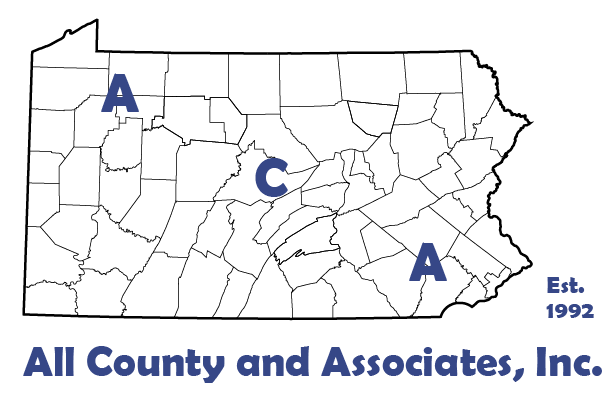
Today, most projects need some form of stormwater management. Thus, stormwater management is not only for large subdivisions or commercial developments. We often find that smaller projects need some form of stormwater management. This includes pool construction to single-family house construction. There are many different practices that can manage stormwater. So, let’s take a look at how a we select and size these practices, as well as things owners should know.
Selecting a Stormwater Practice
In most instances, the first step to selecting the practice, is investigating the soil. Based on the site and project, we select locations best suited for testing. From there, an excavator and our soils professional perform a soil probe. A soil probe is an excavation of the soils to find limiting zones and soil features. Limiting zones include groundwater, bedrock, and redoximorphic features.
These limiting zone depths will dictate the type of practice and the depth to the bottom of the practice. Most practices, need a two-foot separation distance to the limiting zone. This means the invert of the practice must be two-feet above the limiting zone. In residential applications this usually leads to one of three practices. A rain garden, an exposed infiltration trench, or a subsurface infiltration bed.
Shallow limiting zones set the infiltration invert closer to the existing land surface. This means a berm will need built up and a rain garden is the optimal solution. In applications like a pool or patio, we recommend an exposed infiltration trench. This practice works for both shallow and deeper limiting zones. For smaller projects with deep limiting zones, we select a subsurface infiltration bed.
Sizing a Stormwater Practice
Once selected, we size the practice. There are three primary contributing factors. They are discharge rate, infiltration volume and water quality volume. These requirements are set by municipal ordinances. The goal is to reduce flooding, promote groundwater recharge and improve the quality of water leaving the property.
These ordinances are in place, because new construction increases impervious surface. Thus, increasing the rate of discharge and decreasing infiltration and water quality. To meet rate requirements, the stormwater facility must impound runoff. Thereby, releasing it at the same or slower rate than before construction.
Next, the basin must capture runoff to offset the extra volume generated. This volume comes from the new surface infiltrating less runoff than before construction. Thus, a facility must infiltrate runoff back into the ground. This usually must occur within seventy-two hours. This infiltration rate comes from a soil percolation test. We perform this test at the invert of the facility, as set by the soil probe.
What to Know
As the owner of a property, the most important thing to understand is maintenance. No practice is maintenance free, but most practices are not maintenance intensive either. The biggest thing to keep in mind, is that stormwater is not a set it and forget it item.
Let’s start by looking at rain gardens. These practices are landscaping areas, not all that different from your typical garden. The plantings are more weather tolerant, but maintenance is the same. Debris removal, weeding, mulching and pruning are typical maintenance requirements. From time to time, plants will need removed and replaced.
Next, are the exposed trench infiltration trenches. For owners, preventing debris from clogging the stone is the biggest maintenance item. In some instances, the stone material will need removed, cleaned and reinstalled. This comes from leaf debris, rooftop cinders and other grit washing into the practice.
Finally, subsurface beds are not a means to hide stormwater. Their traditional maintenance requirements are not that different from the exposed trench. The biggest need is to prevent debris, cinders and grit from entering the bed. Once it is there, it is hard to remove. So, incorporating filters will reduce system maintenance and prevent failure. That said, if the system starts to retain water, the same maintenance as the exposed trench will apply.
To learn more about stormwater management, review our Homeowner’s Stormwater Management Guide.
Who is ACA?
Started in 1992 and located in Chester County, PA ACA has grown to become a full-service civil engineering firm. Today, we merge professional services with practical knowledge for residential and commercial projects. No matter the scale, from installing a fence, to building a structure or developing land, you need permits. Because the approval process includes many permits and agencies, it can be a headache. Working with ACA’s full-service team saves you time, money, and headaches. Every step of the way, we are here to support you and educate you about the process. Here are some of the basic services we provide:
Construction Management | Civil Engineering | Environmental Permitting | Septic System Testing and Design | Land Surveying | Wetland Delineations and Mitigation
Please feel free to browse our website or if working on a project or need help, contact us at (610) 469-3830.
Also, join the conversation on: Facebook | LinkedIn
